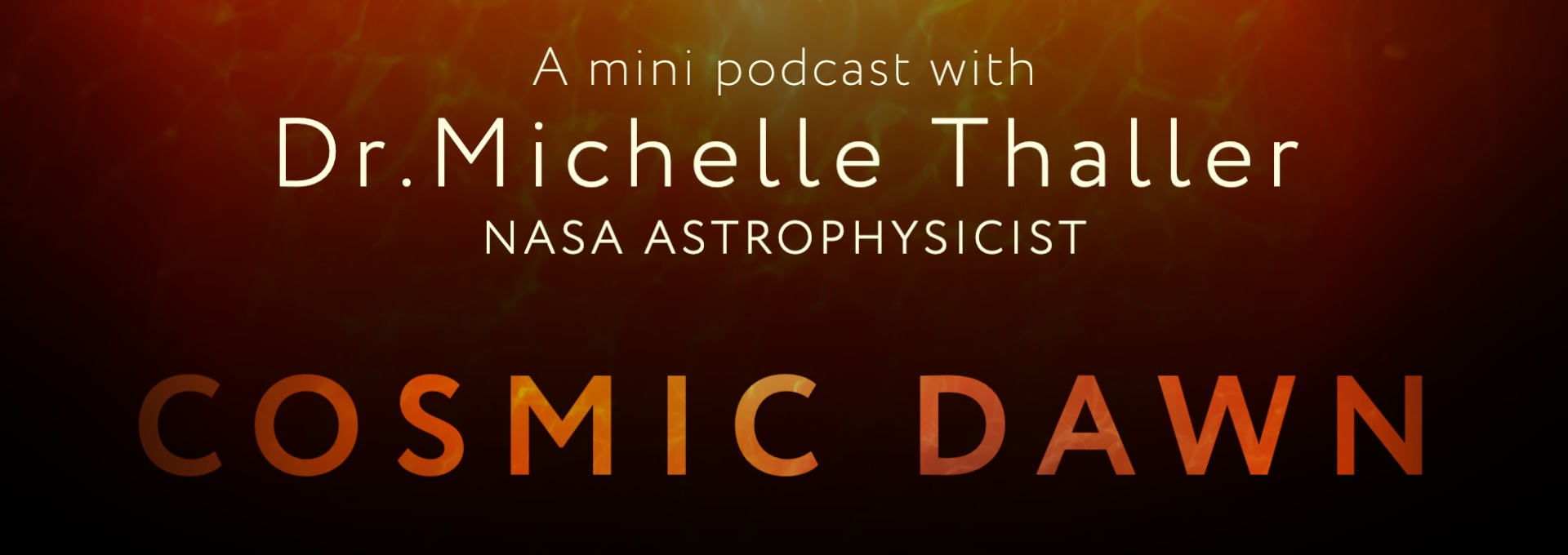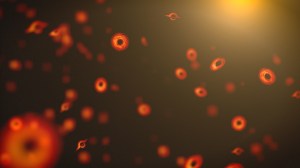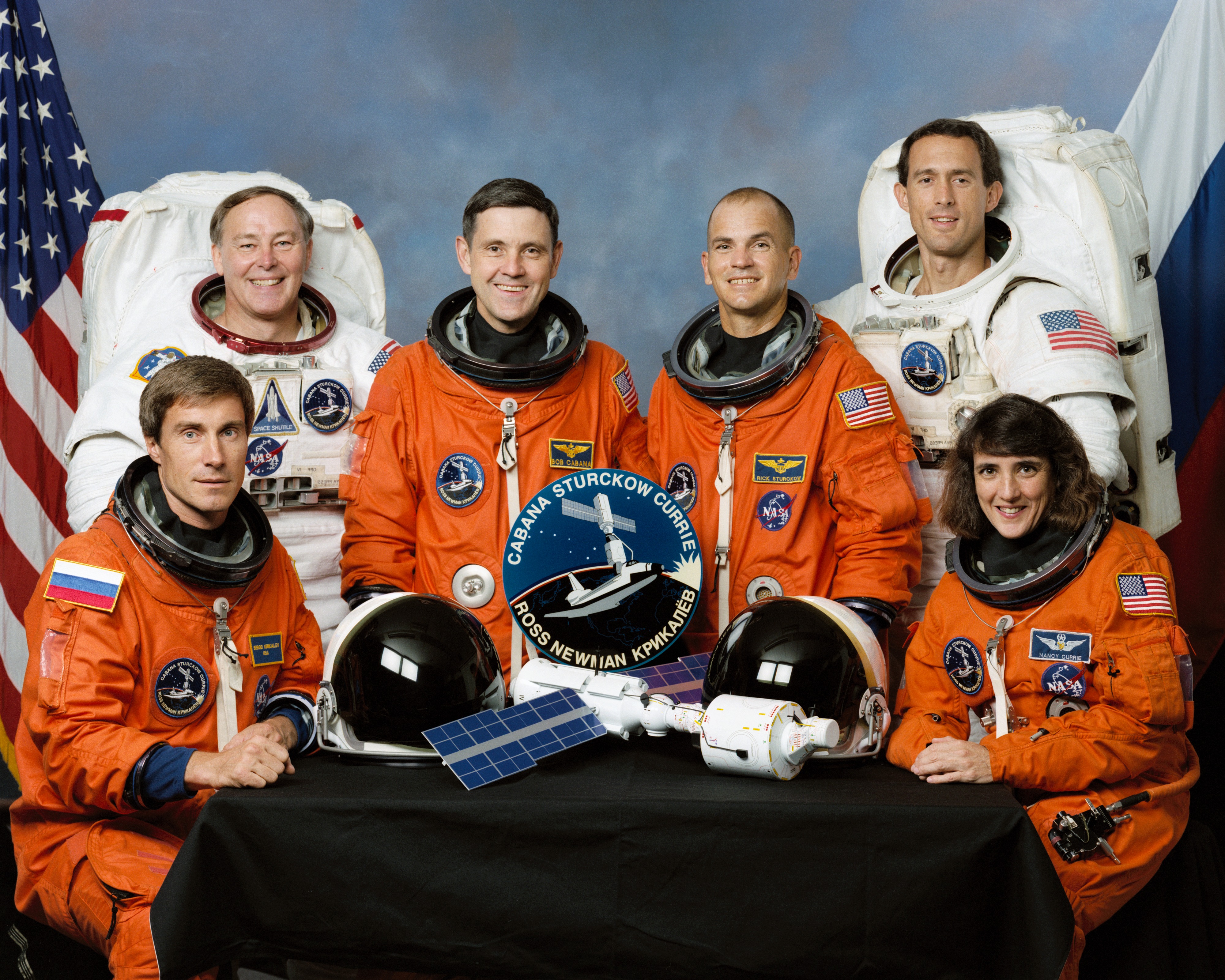How NASA’s Roman Space Telescope Will Illuminate Cosmic Dawn
Today, enormous stretches of space are crystal clear, but that wasn’t always the case. During its infancy, the universe was filled with a “fog” that made it opaque, cloaking the first stars and galaxies. NASA’s upcoming Nancy Grace Roman Space Telescope will probe the universe’s subsequent transition to the brilliant starscape we see today –– […]
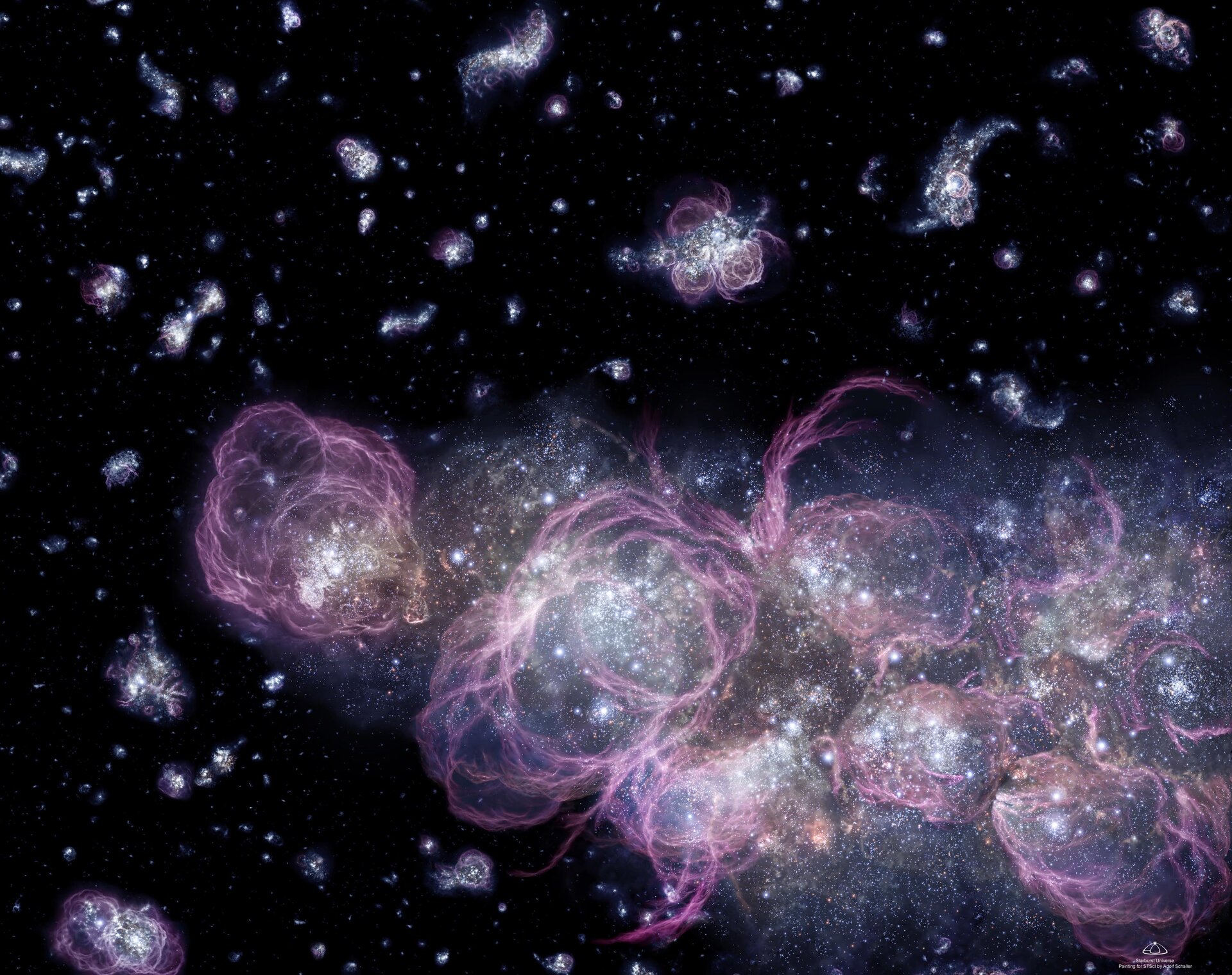

0:00 / 0:00
Today, enormous stretches of space are crystal clear, but that wasn’t always the case. During its infancy, the universe was filled with a “fog” that made it opaque, cloaking the first stars and galaxies. NASA’s upcoming Nancy Grace Roman Space Telescope will probe the universe’s subsequent transition to the brilliant starscape we see today –– an era known as cosmic dawn.
“Something very fundamental about the nature of the universe changed during this time,” said Michelle Thaller, an astrophysicist at NASA’s Goddard Space Flight Center in Greenbelt, Maryland. “Thanks to Roman’s large, sharp infrared view, we may finally figure out what happened during a critical cosmic turning point.”
Lights Out, Lights On
Shortly after its birth, the cosmos was a blistering sea of particles and radiation. As the universe expanded and cooled, positively charged protons were able to capture negatively charged electrons to form neutral atoms (mostly hydrogen, plus some helium). That was great news for the stars and galaxies the atoms would ultimately become, but bad news for light!
It likely took a long time for the gaseous hydrogen and helium to coalesce into stars, which then gravitated together to form the first galaxies. But even when stars began to shine, their light couldn’t travel very far before striking and being absorbed by neutral atoms. This period, known as the cosmic dark ages, lasted from around 380,000 to 200 million years after the big bang.
Then the fog slowly lifted as more and more neutral atoms broke apart over the next several hundred million years: a period called the cosmic dawn.
“We’re very curious about how the process happened,” said Aaron Yung, a Giacconi Fellow at the Space Telescope Science Institute in Baltimore, who is helping plan Roman’s early universe observations. “Roman’s large, crisp view of deep space will help us weigh different explanations.”
0:00 / 0:00
Prime Suspects
It could be that early galaxies may be largely to blame for the energetic light that broke up the neutral atoms. The first black holes may have played a role, too. Roman will look far and wide to examine both possible culprits.
“Roman will excel at finding the building blocks of cosmic structures like galaxy clusters that later form,” said Takahiro Morishita, an assistant scientist at Caltech/IPAC in Pasadena, California, who has studied cosmic dawn. “It will quickly identify the densest regions, where more ‘fog’ is being cleared, making Roman a key mission to probe early galaxy evolution and the cosmic dawn.”
The earliest stars were likely starkly different from modern ones. When gravity began pulling material together, the universe was very dense. Stars probably grew hundreds or thousands of times more massive than the Sun and emitted lots of high-energy radiation. Gravity huddled up the young stars to form galaxies, and their cumulative blasting may have once again stripped electrons from protons in bubbles of space around them.
“You could call it the party at the beginning of the universe,” Thaller said. “We’ve never seen the birth of the very first stars and galaxies, but it must have been spectacular!”
But these heavyweight stars were short-lived. Scientists think they quickly collapsed, leaving behind black holes –– objects with such extreme gravity that not even light can escape their clutches. Since the young universe was also smaller because it hadn’t been expanding very long, hordes of those black holes could have merged to form even bigger ones –– up to millions or even billions of times the Sun’s mass.
Supermassive black holes may have helped clear the hydrogen fog that permeated the early universe. Hot material swirling around black holes at the bright centers of active galaxies, called quasars, prior to falling in can generate extreme temperatures and send off huge, bright jets of intense radiation. The jets can extend for hundreds of thousands of light-years, ripping the electrons from any atom in their path.
NASA’s James Webb Space Telescope is also exploring cosmic dawn, using its narrower but deeper view to study the early universe. By coupling Webb’s observations with Roman’s, scientists will generate a much more complete picture of this era.
So far, Webb is finding more quasars than anticipated given their expected rarity and Webb’s small field of view. Roman’s zoomed-out view will help astronomers understand what’s going on by seeing how common quasars truly are, likely finding tens of thousands compared to the handful Webb may find.
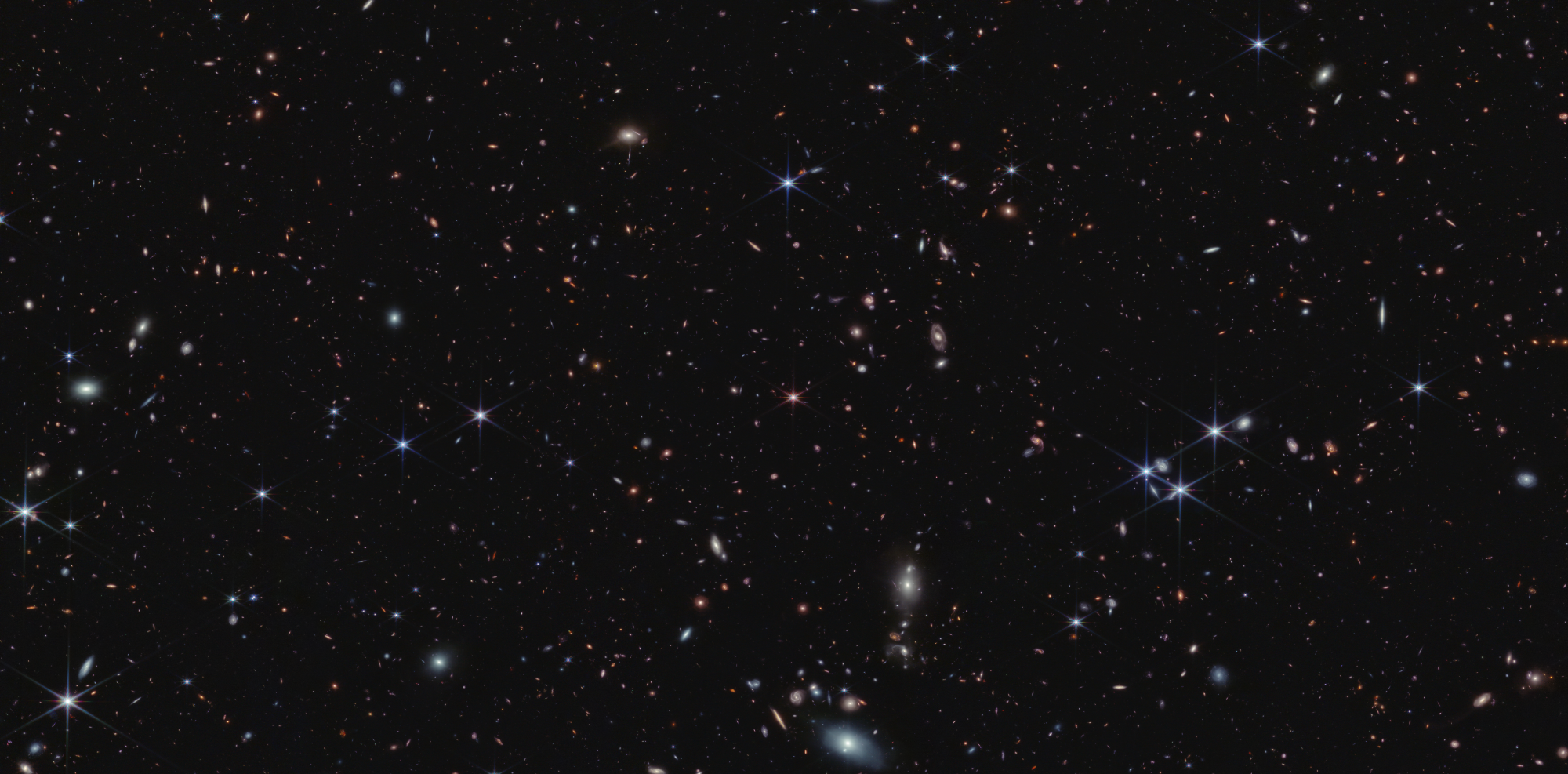
“With a stronger statistical sample, astronomers will be able to test a wide range of theories inspired by Webb observations,” Yung said.
Peering back into the universe’s first few hundred million years with Roman’s wide-eyed view will also help scientists determine whether a certain type of galaxy (such as more massive ones) played a larger role in clearing the fog.
“It could be that young galaxies kicked off the process, and then quasars finished the job,” Yung said. Seeing the size of the bubbles carved out of the fog will give scientists a major clue. “Galaxies would create huge clusters of bubbles around them, while quasars would create large, spherical ones. We need a big field of view like Roman’s to measure their extent, since in either case they’re likely up to millions of light-years wide –– often larger than Webb’s field of view.”
Roman will work hand-in-hand with Webb to offer clues about how galaxies formed from the primordial gas that once filled the universe, and how their central supermassive black holes influenced galaxy and star formation. The observations will help uncover the cosmic daybreakers that illuminated our universe and ultimately made life on Earth possible.
The Nancy Grace Roman Space Telescope is managed at NASA’s Goddard Space Flight Center in Greenbelt, Maryland, with participation by NASA’s Jet Propulsion Laboratory and Caltech/IPAC in Southern California, the Space Telescope Science Institute in Baltimore, and a science team comprising scientists from various research institutions. The primary industrial partners are BAE Systems, Inc in Boulder, Colorado; L3Harris Technologies in Rochester, New York; and Teledyne Scientific & Imaging in Thousand Oaks, California.
Download high-resolution video and images from NASA’s Scientific Visualization Studio
By Ashley Balzer
NASA’s Goddard Space Flight Center, Greenbelt, Md.
Media contact:
Claire Andreoli
claire.andreoli@nasa.gov
NASA’s Goddard Space Flight Center, Greenbelt, Md.
301-286-1940
Share
Details
Related Terms
What's Your Reaction?



















.jpg?#)
























